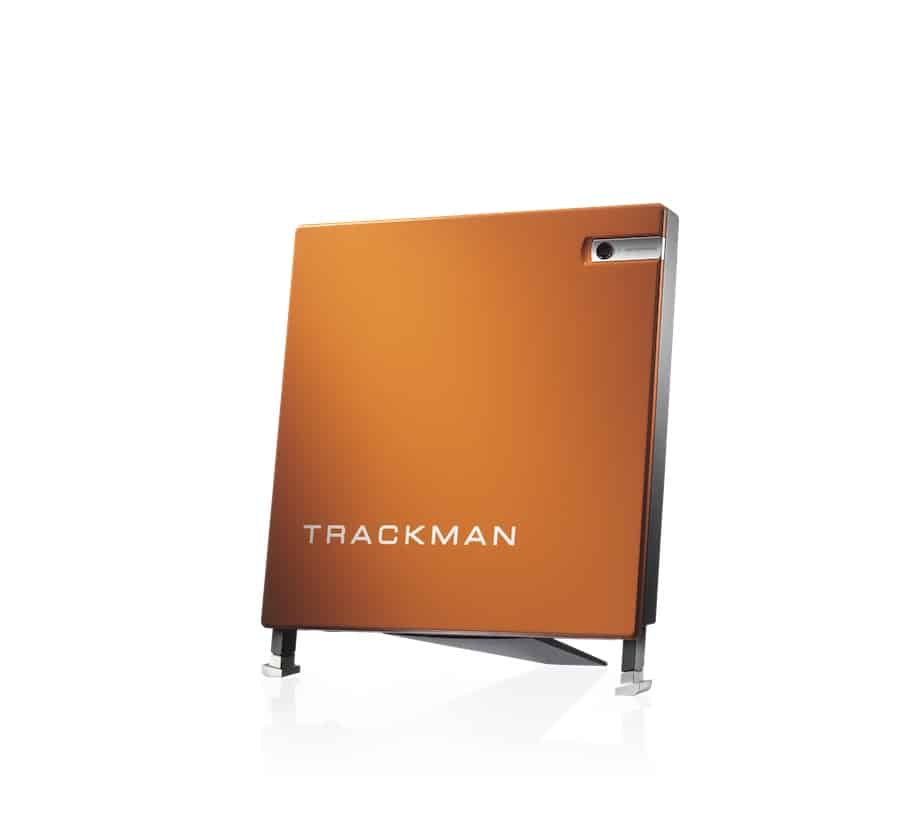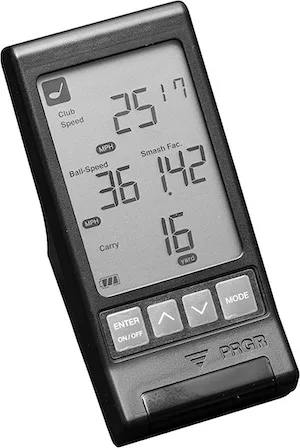If you want to know how golf simulators work, I will give you a full breakdown of the technology, hardware, and software.
I currently have a simulator installed in the basement, I’ve had it for about 6 months now and have had plenty of time to learn what I like, and some things I don’t like.
How do golf simulators work?
A launch monitor captures ball and club data as you hit.
The launch monitor sends the data to software that is hosted on a PC or other device.
The software calculates and translates the data into a visual representation of your golf shot and overlays that onto a golf course.
The PC or device sends the visual to a projector that displays the visual on a screen.

The brains of any golf simulator include the launch monitor and software. The launch monitor is simply capturing data on each shot. The software is applying that information to the “golf course” or “practice area” to produce the result. The software is then tracking your progress as if you are playing a real round of golf.
It’s certainly a bit more complicated than that, and I’ll expand on the details below. There are also significant variations in the launch monitor type and the capability to measure ball and club data. Basically, more data/accuracy equals a higher price.
No golf simulator is complete without the ability to safely hit a golf ball. So, a proper hitting mat and backstop are essential. As with launch monitors and their ability to deliver data, the overall experience delivered comes with a price.
Higher-end golf simulators will have a nice white screen that you hit into, that screen has a projected image of the golf course and you can “watch” your ball fly down the fairway….or into the Pacific Ocean on Pebble Beach as I did last night. *face-palm
What do you want to get out of a golf simulator?

As with the purchase of anything, you have to determine what you actually want to get out of it.
Some people are mostly concerned with the “entertainment value” of a golf simulator, while others are far more concerned about the accuracy and quality of data. You can have both, but you’ll pay for it. Simulators can cost between $2,000 to upwards of $100,000.
Personally, I wanted something very accurate that could help me test golf balls and other equipment. And something that would deliver quality data to help improve my game. On top of that, I wanted something that would allow me to play some winter golf with my wife, kids, and friends.
Think of the cost as two sliding scales.
Technology
Aesthetics
Golf Simulator Technology
There are two parts when it comes to golf simulator technology. The launch monitor, and a device that runs the simulator software. This could be an iPad or a PC for example.
Launch Monitors
You can spend anywhere from $190 – $25,000+ on a launch monitor alone. On the lower end, many of them are not capable of working with simulator software, and only offer basic data that is displayed on the device itself, or shared with your smartphone.


Additionally, lower-end launch monitors have significant issues with data accuracy. You may be able to get good numbers on your swing speed for example. But distance and ball spin can be incredibly inaccurate.
On the high end, a Trackman for example, you can get ball data and club data that has been proven to be incredibly accurate, and a lot of it. Ball speed, club speed, launch angle, smash factor, lie angle etc. The list of data from a quality launch monitor is impressive.
You can also find a very high-quality launch monitor for a price that is somewhere in between. Some deliver accuracy, but perhaps do not offer quite as many data points. The Foresight Sports GC3 for example.
Golf Simulator Software and Hardware
To run the software that is going to “put you on a golf course”, you’ll need a capable PC. On the higher end, you could spend thousands on a gaming PC with maxed-out graphics and memory. This will deliver a very smooth experience where the ball on the screen takes off as soon as you actually hit it.
With a high-end PC, you’ll also have higher-quality graphics on the golf course, offering a slightly more realistic view.
There are also options for the software used by golf simulators. High-end launch monitors tend to have their own proprietary software. Trackman and Foresight Sports, for example, each have their own that comes with the purchase of a launch monitor. Of course, there are add-ons available to enhance the experience.
The various software packages usually offer a handful of golf courses as part of the base fee, then offer several additional courses as add-ons.
Golf Simulator Aesthetics
Maybe aesthetics isn’t the best term here, but I am thinking about the overall environment. Is your simulator going to be set up to host friends and offer comfortable seating, maybe a bar with TVs to watch the game while you play? Or perhaps you just want a way to hit balls.
You could install a simulator in your garage with a hitting net and a mat. The software can run on your laptop and maybe you even have it displayed on a TV.
Or you could go with a projector to display the image on a high-quality screen and have all of the bells and whistles.
Some builds even offer a moving platform with rough, fairway, and simulated sand surfaces to hit off of. The moving platform conforms to the contour of the actual golf course. Meaning, if your ball is positioned on an incline on the golf course, the platform will move to force you into that incline. Crazy – I know!
Final Thoughts
So, how a golf simulator works is really dependent on what you want to get out of it.
At the very base level, a launch monitor captures data from the ball and club, sends that data to a PC running software, which generates a visual representation of your golf shot. You can add as much or as little to it as you’d like.
